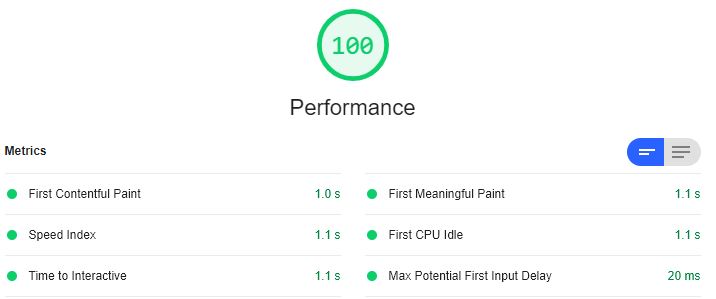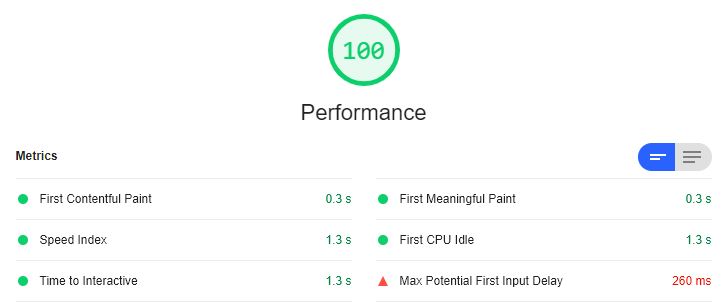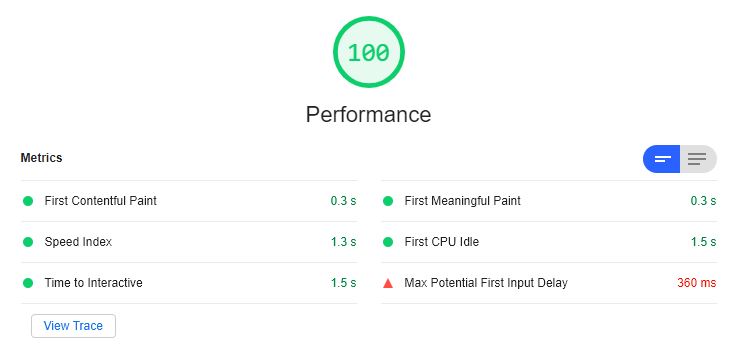Update: Since 4.9.0, we have switched from admin requests to the REST API to improve performance and stability. If you want to know more about Web Vitals, read this article.
This article will use the premium plugin with all settings enabled, including GEO IP & A/B testing. For free users below test results are less relevant, but the conclusion is still interesting!
In this article, we will discuss the effect Complianz has on the page load speed of your website. We will also discuss the difference between GTMetrix and Google’s Lighthouse Audit. The main difference is reading the actual data from both sources.
NB. We will discuss page speed as a metric, but we will focus on Google’s Mobile-First indexing, user experience and optimizing the delivery of content.
Content
- Parameters
- Test #1: Default WordPress installation
- Test #2: Average WordPress installation
- Test #3: Heavy WordPress installation
- Optimizations by Complianz to increase page load speeds
- Conclusion
Let’s start with the basics
We will be using a basic installation of WordPress with the following parameters:
- Shared Hosting, with PHP 7+, no caching
- WordPress 5.2+
- Standard Twenty Nineteen WordPress theme
- Complianz 3.1.0
- No further optimization
We will slowly add more content to show how Complianz actually works and if it affects a performance audit.
Test #1: Default installation
The admin-ajax.php call (Replaced by REST API since 4.9.0)
GTMetrix will load the page on a remote server, without caching, to audit the page speed load. The most common question we get is about the admin-ajax.php call at the end of the waterfall chart.
This admin-ajax.php call is once for every user to see which settings should be enabled for that particular user. These settings will be cached after the first-page load and won’t affect the page load again.
The admin-ajax.php call is also lazy-loaded. The website will be interactive and shown above the fold before this call is made and won’t affect user experience.
The difference between page load speed and user experience is the main difference between GTMetrix and Lighthouse by Google. This will be more clear below the tests.
GTMetrix without Complianz
GTMetrix with Complianz enabled
You can see Complianz adds requests to handle user consent and settings, including the cookie notice, which adds to the page size. The rest of the requests, page content, and load time is primarily due to the theme’s CSS and WordPress jQuery.
The most important thing to note, however, is that GTMetrix does not account for caching and user experience. Its Page Speed audit is not as applicable to Google’s Mobile-First indexing, which has been prioritized by the end of 2018.
We will now add new metrics to have a balanced approach to your website’s performance.
Lighthouse Audit without Complianz
Lighthouse Audit with Complianz
We will explain the most critical metrics in Google’s notion of performance:
The metrics are proposed to audit your website’s performance, not just Complianz’s effect on your website.
First Meaningful Paint
First Meaningful Paint is essentially the paint after which the most significant above-the-fold layout change has happened, and web fonts have loaded. See the documentation to learn more: First Meaningful Paint: A Layout-Based Approach.
Speed Index
Speed Index is a page load performance metric that shows you how quickly the contents of a page are visibly populated. The lower the score, the better.
Time to Interactive
The Time to Interactive (TTI) metric measures how long it takes a page to become interactive. “Interactive” is defined as the point where:
- The page has displayed helpful content, which is measured with First Contentful Paint.
- Event handlers are registered for the most visible page elements.
- The page responds to user interactions within 50 milliseconds.
Some sites optimize content visibility at the expense of interactivity. This can create a frustrating user experience. The site appears to be ready, but when the user tries to interact with it, nothing happens.
Let’s continue with the results of the other installations.
While the default installation is WordPress in its most simple form, adding a new theme, more plugins and content will complicate reading the results concerning the effect of Complianz on website performance. For the following results, we have adjusted the parameters to handle the new page loads. We will use popular themes, plugins, and optimizations to simulate an average and heavy configuration.
When adding content, for example, YouTube videos, Social iFrames, and Javascript, Complianz will block 3rd Party additions before consent. Meaning it could speed up your website significantly, especially concerning Google’s Lighthouse metrics.
Test #2: Average Installation
We will be using a basic installation of WordPress with the following parameters:
- Shared Hosting, with PHP 7+, no caching
- WordPress 5.2+
- Standard Twenty Nineteen WordPress theme
- Complianz 3.1.0
- Elementor Page Builder
- Animations On-Page
- iThemes Security Pro
- Google Tag Manager
- Yoast SEO
- No caching plugin
GTMetrix without Complianz
GTMetrix with Complianz
Lighthouse without Complianz
Lighthouse with Complianz
Concluding Test#2
Complianz doesn’t affect performance on the average installation. The increase in page loading time for GTMetrix is the lack of caching. We recommend caching for most websites, especially for images and CSS. This also explains the first input delay in the Lighthouse Audit.
For the next test, we will use really-simple-ssl.com. A heavy-load website with caching (WP Rocket).
Test #3: Heavy Website
We will be using a basic installation of WordPress with the following parameters:
- WordPress Hosting – VPS, with PHP 7+
- WordPress 5.2+
- Helper Theme
- Complianz 3.1.0
- iThemes Security Pro
- Google Tag Manager
- Yoast SEO
- Custom Code
- 3rd Party Video’s / Scripts
- WP Rocket Caching
GTMetrix without Complianz
GTMetrix with Complianz
Lighthouse without Complianz
Lighthouse with Complianz
Concluding Test#3
This is the first time we used optimizations through a plugin like WP Rocket to cache CSS, optimize images and minify files, etc. As you can see, there’s a big difference between the 2 Audits.
GTMetrix shows a longer fully loaded time for the website, although Google doesn’t seem to mind a more substantial website, as long the site is loaded efficiently for the user. The fully loaded time with Complianz isn’t due to Complianz but the website’s content.
What does happen is that on the first load, the server requests go up because of Complianz user settings, but the page size and loading time go down because Complianz blocks 3rd party scripts?
The reason why Lighthouse’s audit is still at 100% is that Fully Loaded Time by GTMetrix is not a metric which is relevant when talking about the performance of average to heavy websites, but first contentful paint, meaningful paint, and time to interactive are! Google’s Lighthouse Audit is optimized for SEO and User Experience.
Optimizations by Complianz to increase page load speeds
Complianz is built to be as non-intrusive and lightweight as possible. To handle the Cookie Notice, blocking 3rd Party Scripts, Complianz will add and change the output of your website. For example:
- After the first meaningful paint, Complianz will check the user settings once. This action will be cached in the user’s browser for further page loads
- Complianz blocks loading 3rd party scripts before consent, for example, iFrames, scripts, videos and social feeds.
- If controlled by Complianz, scripts will be lazy-loaded if users have consented previously
Conclusion
The page speed or fully loaded time by GTMetrix is not the most reliable source to see if your website’s performance is sufficient for your users. Complianz’ effect on page speed is noticeable (both ways). Still, the metric is not relevant for either your users or Google’s algorithm, even if Complianz has a positive effect on the fully loaded time.
Google Mobile-First indexing (for SEO) and its Lighthouse Audit are among the most reliable sources to check if your website delivers the best User Experience, which covers speed and much, much more. For now, we don’t see a negative impact from Complianz on any configuration. If you think your website is affected by our plugin. Please let us know!














